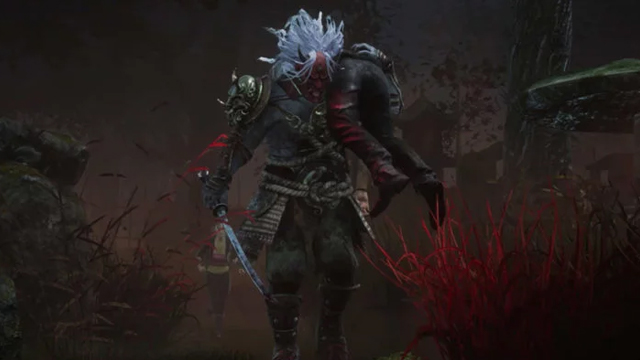Dead by Daylight: Cursed Legacy is out now, adding new Killer Oni and new Survivor Yui Kimura to the game. We held an interview via email with Behaviour Interactive’s creative director Dave Richard, who discussed how to retain a player base, Pennywise the clown, and how to pull off an asymmetrical multiplayer game.
ALSO: Game Revolution’s Reader-Voted Game of the Decade (2010-19)
GAME REVOLUTION: What is the creative process behind creating an original Killer like The Oni?
DAVE RICHARD: Finding the spark for the idea is usually pretty fast and comes from the inspiration of the moment or a particular strategy we have in mind. Fleshing out the design is intense teamwork. The chapter content changes and adapts as the narrative, art, gameplay, audio, and technical implementation go through an iterative process.
For Cursed Legacy, we did a lot of research! We studied Japanese culture and monsters. We worked closely with Japanese partners and players to validate the concepts and ideas.
What are some of the challenges when it comes to developing an asymmetrical multiplayer game like this, that the average player maybe wouldn’t consider?
Creating content that feels good for both roles is challenging. When designing a power like the Oni’s, we want to make sure the player controlling the killer feels powerful without it being unfair to survivors. Add to this a large amount of content already available in the game (and growing!), and it makes for an exciting puzzle to solve. When designing powers and perks, we have to consider all the other killers’ powers and perks since everything can be mixed and matched.
There’s a lot of controversy surrounding live service games — what do you think is the key to retaining a player base surrounding one particular game, and keeping a game’s community happy?
We follow a set of core values that we believe are essential for any studio working with a community. Being honest, transparent, communicating about our right moves, and acknowledging mistakes. We’re also as generous as we can be when it comes to accessibility to new content. Considering the community as a member of the dev team is definitely a reason why the game is still growing.

Dead by Daylight is one of a limited number of successful asymmetrical multiplayer games out there. What do you think it is about your game that has made it one of the most well-liked games in its genre?
Making games, in general, is tricky. We’re doing our best to create core loops that are fun and addictive, to give lots of choices and progression opportunities that are engaging. That’s all very important but is only part of the story. Engaging the community and transforming players into long-time supporters comes not only from the game content but also from being active within the community, with transparency and honesty.
The challenge with a game like Dead by Daylight is encouraging players to choose the survivors over the Killer. How do you convince them to choose to play as characters who, on the surface, aren’t as interesting as controlling a scary monster?
In reality, depending on the player demographics and life span within the game, players tend to choose one role over the other or play both naturally. Not everyone has a power fantasy; a lot of players are in Dead by Daylight to have a genuinely stressful experience. They want to feel the rush or the fear of being hunted, and that’s easily accessible through the survivor role.

What established killers, from movies or otherwise, would you like to be able to add to the game in the future?
There are still a few candidates that we’d love to see in the Dead by Daylight roster. Personally, I would love to see Jason and Pennywise become part of the family!
After the Nightmare Edition and Cursed Legacy, what can we expect for the future of Dead by Daylight?
In terms of specifics, my hands are tied, my lips sealed. What I can say is that we’re excited and grateful to be working on a project that so many players are passionate about. It fuels us to make better and better content. 2020 will be full of surprises!







